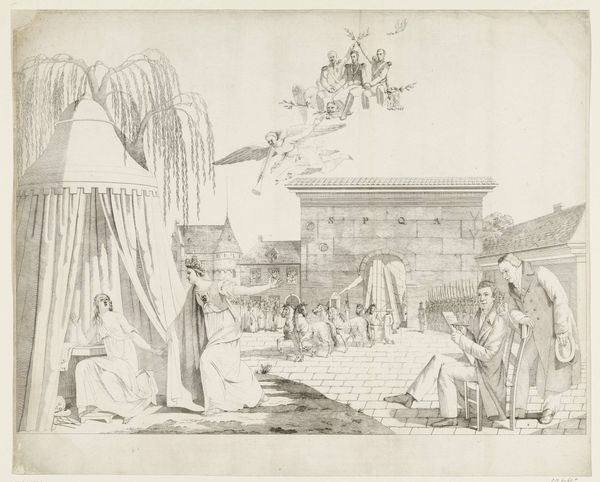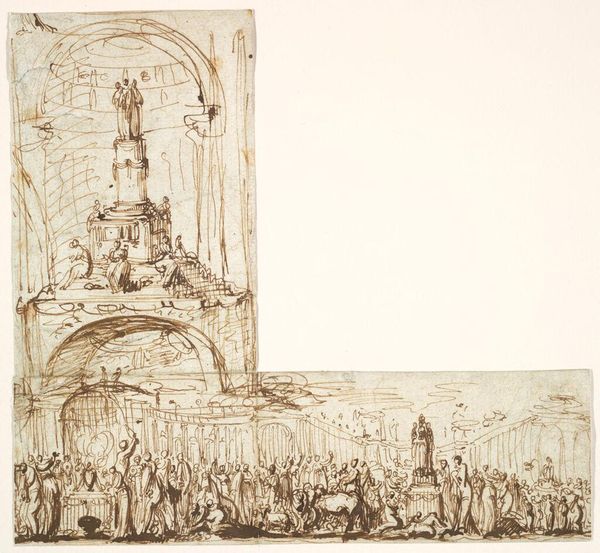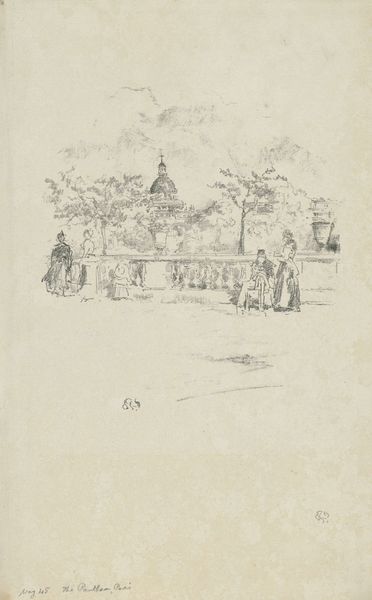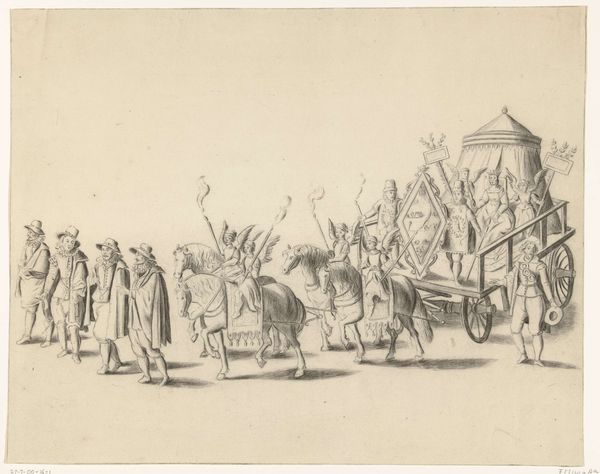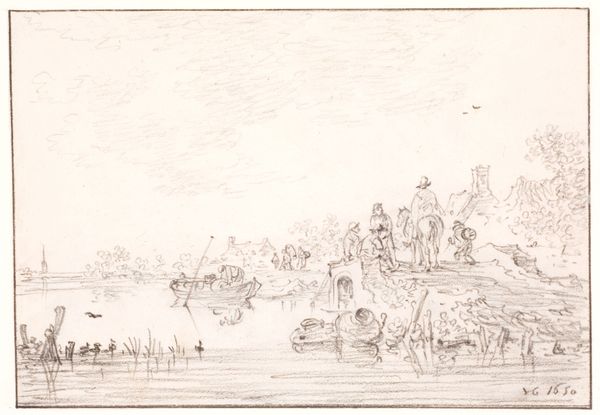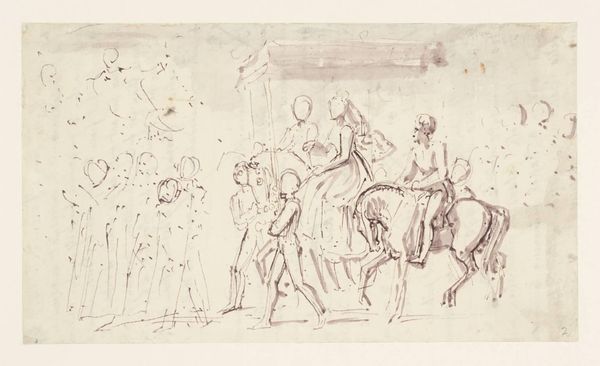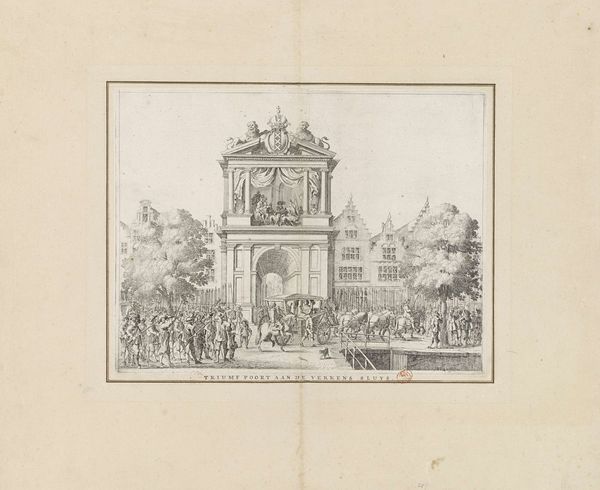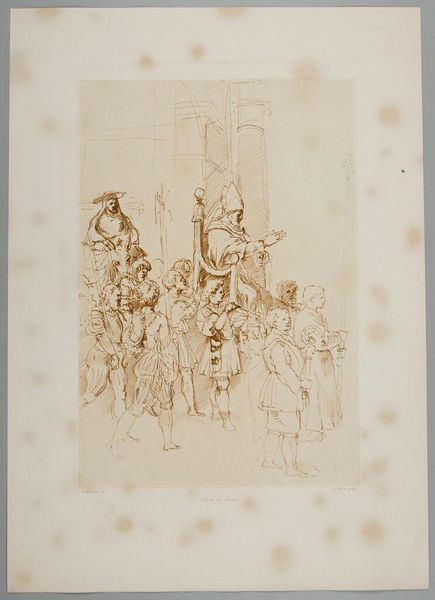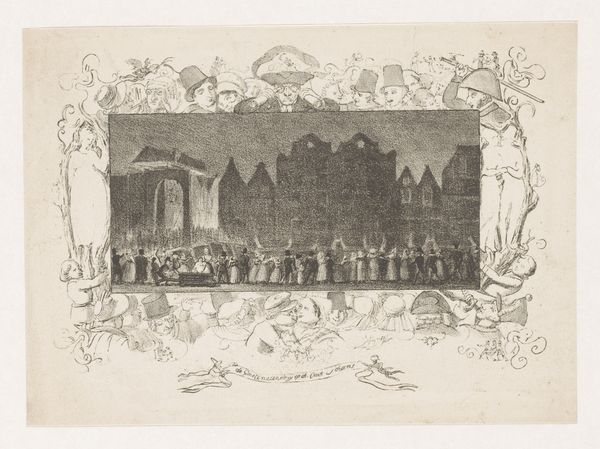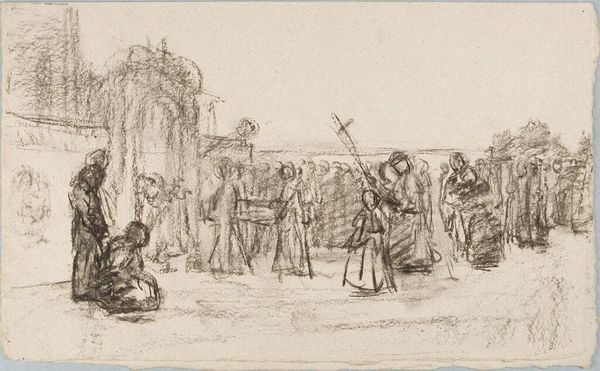
Historische gekostumeerde optocht te Amsterdam bij het 25-jarige regeringsjubileum van koning Willem III in 1874 (plaat 16) 1874
0:00
0:00
Dimensions: height 115 mm, width 365 mm
Copyright: Rijks Museum: Open Domain
This drawing depicts the historical costumed parade in Amsterdam during King Willem III’s 25-year jubilee in 1874. The parade's central visual element is the palanquin. The palanquin, a covered litter for carrying a dignitary, isn't merely a mode of transport. Consider its symbolic weight: historically, the palanquin has signified power, divinity, and untouchability. In ancient Rome, similar litters carried emperors, projecting an image of supreme authority. We see echoes of this in Byzantine depictions of emperors borne aloft. The jubilees tap into deep reservoirs of collective memory and the psychological need for continuity and stability. Note how they are represented: the palanquin transforms the King into a kind of living icon, separated from the crowd. The procession itself becomes a ritual, reaffirming social order. The palanquin is more than just a carriage; it is a vessel of collective desires and aspirations. It resurfaces, evolves, and takes on new meanings across historical contexts, and speaks to our ingrained need for symbols of leadership.
Comments
No comments
Be the first to comment and join the conversation on the ultimate creative platform.
